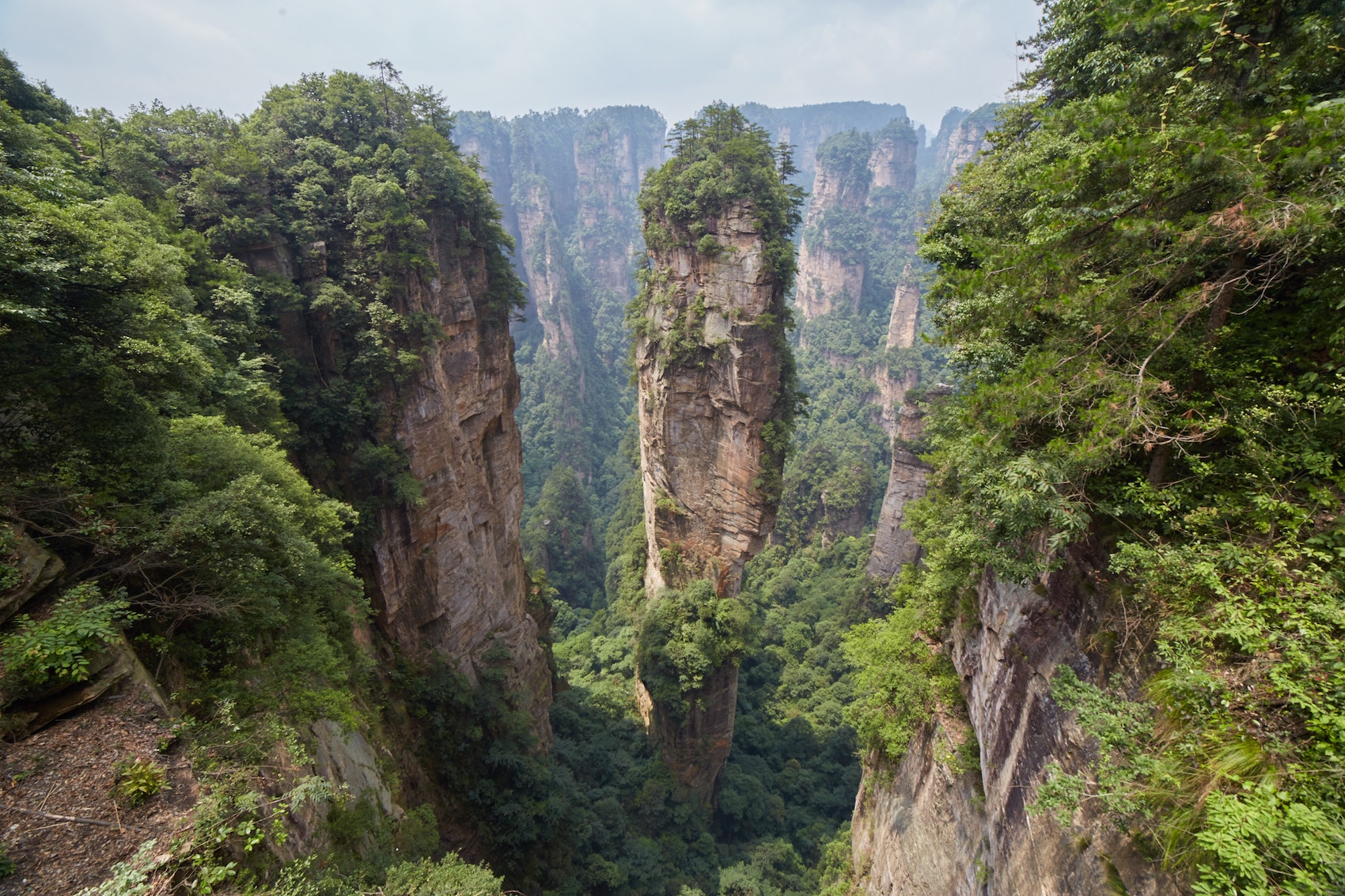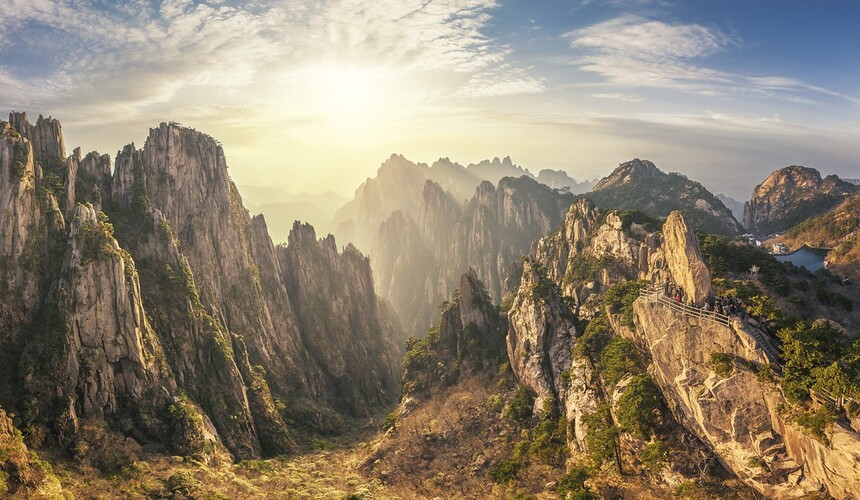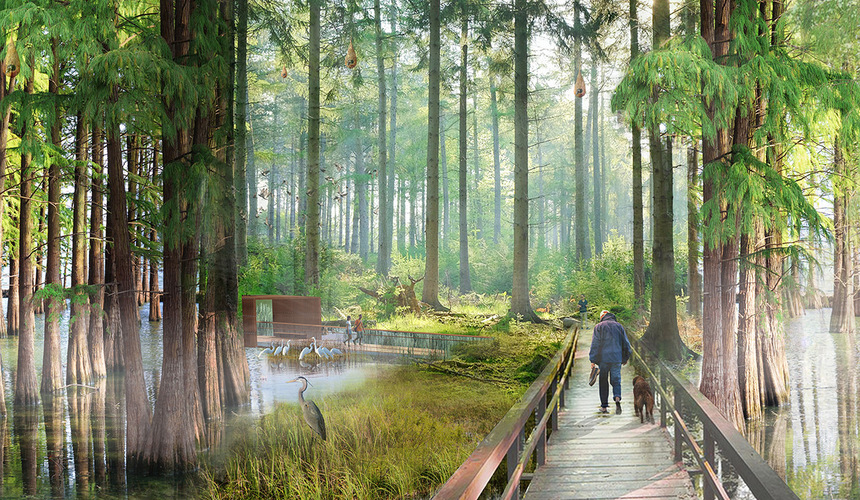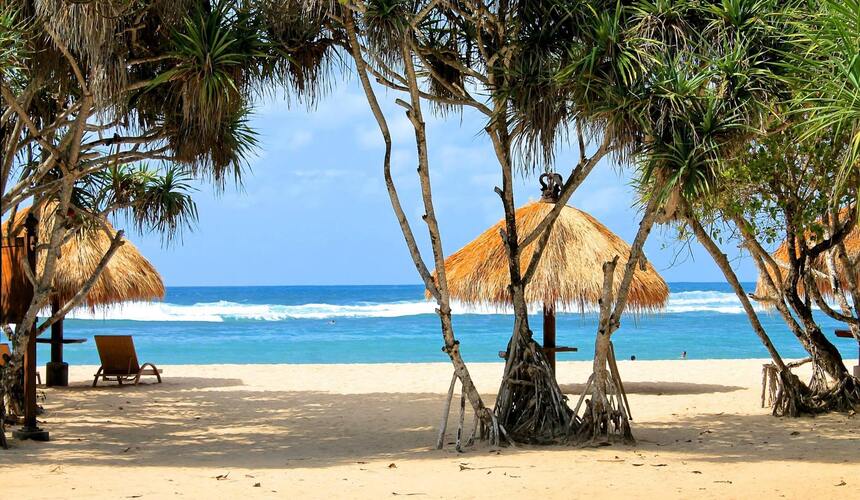
Incredible “AVATAR” world at Zhangjiajie
As you all know, Zhangjiajie from Hunan Province inspired the bewitching landscapes of James Cameron’s science-fiction blockbuster Avatar. Some 380 million years ago during the Devonian Period, Zhangjiajie was submerged under the ocean. The tectonic activity which thrust oceanic bedrock above water and turned the land into seas left a quartzite sandstone layer 500 meters thick. After the neotectonics movement pushed up the rocks while constant weathering for over millions of years, it carved the plateau into many free-standing peaks. In 2010, the distinct sandstone peak landform was named by the world geological community as the Zhangjiajie Landform.

Wulingyuan Scenic and Historic Interest Area is a scenic area comprised of 3000 sandstone pillars, 800 streams, 40 caves and countless Macaques. Taimen Mountain and Zhangjiajie Grand Canyon are the other two famous attractions near the Zhangjiajie National Forest Park which will take you about 30 to 40 minutes by car.

Wulingyuan Scenic and Historic Interest Area
In the scenic area, the spots are connected by the shuttle bus which makes it more convenient for your visit. Therefore if you are at the top of either Tanzi Mountain, Yangjiajie Scenic Area or Yuanjiajie Scenic Area you can easily get on the bus to reach another spot instead of hiking down and up.

Yuanjiajie Scenic Area
This is the most popular and famous spots among others. You can take the 326-meter high Bailong elevator which will only take you 88 seconds to arrive at the top of Yuanjiajie. If you prefer hiking you might need about one hour.

If you look out carefully when taking the Bailong elevator, you can see the Tujia village far on the top of the mountain. Zhangjaijie is the home of Tujia ethnic group which is considered the 8th largest of China’s 55 official minority classifications. Tujia’s women are very good at weaving cloth as one of the three most famous Brocades in China.

If you’ve watched the movie “Avatar” before, then you’ll definitely find the Avatar Hallelujah Mountain familiar, and yet this is the reason why Yuanjiajie is favorite by the visitors.

“First Natural Bridge Under Heaven” is a natural stone bridge with 2 meters wide and is about 5 meters thick. In fact, the two mountains linked by the bridge were originally one mountain. The marvelous bridge was carved by the force of mighty wind and water.

Tianzi Mountain
The second popular spot is Tianzi Mountain. It is named after a Xiang Dakun farmer who belonged to the Tujia tribe. Xiang Dakun led a successful revolt of the farmers and elected to name himself “Tianzi.” Tianzi is the traditional nickname that Chinese emperors were given which means “son of heaven.” You can find many spots such as Shentang Gulf, Dianjiang Terrace, Fields in the Air, Tianzi Pavilion and more all full of with the sandstone peaks in a variety of shapes.


Thriving on the sandstone peaks are the 1,630 plant species. Wuling pine, descended from the horsetail pine, has the widest distribution growing on the sandstone. In order to survive against all odds, it has learned to adapt. Its short and bristly needles can resist low temperatures while bare roots try to suck up every drop of water.

After the visit to the mountain, you can hop on a cable car and get down to stroll in the Ten Miles Gallery. The little green train requests to pay an extra fee, we recommend walking to the Ten Miles Gallery and getting out by train. There are plenty of peaks with different names such as The God of Longevity Welcoming the Guest (寿星迎宾), An Old Man Gathering Herbs (采药老人), Conch Peak (海螺峰), etc. Using your imagination is important, so come and name one by yourself.


Yangjiajie Scenic Area
Yangjiajie Scenic Area is the smallest of the four subsections of Wulingyuan so loved by backpackers. This place is linked to the Yang Family. During the Song Dynasty, the well known General Yang Ye led an army in order to put down the rebellion from Xiang Dakun (who we have mentioned in the Tianzi Mountain). As the battle lasted long he had to settle down here with the family. Consequently, this area was named Yangjiajie, which in Chinese literally means the “territory of the Yang Family”.

Wulong Village, Tianbo Mansion and the Natural Great Wall are in the northern part of Yangjiajie while the One Step to Heaven and the Air Corridor are in the southern part. The cable car is located in between. However, the most impressive site within Yangjiajie should be the Natural Great Wall located near the cable-way station. Looking ahead, visitors can find dozens of mountain walls standing out majestically.

According to the local people’s stories, Wulong Village is where the bandits used to live. It is a good place to learn about the folk customs of Western Hunan Province. The village is located on the top of a high mountain, therefore the terrain makes it easy for the people who live inside to defend themselves.

Taimen Mountain
Since you are in Zhangjiajie, Taimen Mountain is the nearby attraction which we highly recommend. The cable car is the best way to start your trip, panning 7 kilometers, taking only 30 minutes to travel from the city of Zhangjiajie to the top of Tianmen Mountain. In the beginning, you will pass over over farmland, then about halfway of the journey 99 curves and Tianmen Mountain looms in front of you.

For another thrill, walk the narrow glass paths which is a walkway that sits 1,400 meters off of the ground. You might find red ribbons hanging from the trees here, symbolizing the wishes of visitors.


The elevation of Tianmen Mountains is 1518.6 meters, if you want to reach the Tianmen cave climbing the 999 steps is requested. “Tianmen” means the door to heaven. Obviously, it looks like the junction of the common world and the place where god lives. After you climb all the 999 steps, you will be blessed with luck. ‘9’ is the biggest number in Chinese culture while 999 means eternal life.

Zhangjiajie Grand Canyon
This place incorporates deep canyons, streams, waterfalls, caves, cliffs, and forest, providing you a strenuous hiking route. A granite slide is available for you to slide down to the bottom of the canyon. At the end of the hiking route, there is a reservoir where you can take a boat ride to the exit. The Glass Bridge is the highlight of Zhangjiajie Grand Canyon being the longest (430m) and highest (300m) pedestrian glass bridge in the world.


Travel Tips
- The best time to visit Tianmen Mountain is between September and November when temperatures are pleasant and the weather is dry. In Spring, the weather can be rainy and foggy. Peak seasons are July, August and the national holidays. As for winter season the weather is chilly and dry, but it’s the less crowd time.
- The travel length in Zhangjiajie can be 3 to 5 days. If you want to add Fenghuang Old Town into the trip it is recommended at least 4 days. If you lack time then you can first consider visiting Yuanjiajie Scenic Area, Tianzi Mountain area and Taimen Mountain which can cover most of the highlights of Zhangjiajie. As a return or long stay visitor, you can add Yangjiajie Scenic Area and Zhangjiajie Grand Canyon to fulfill the trip.
- Lines can be long to get on the cable car. You can get up early and arrive at the attraction a half-hour before opening time.
- The Wulingyuan Scenic and Historic Interest Area ticket can allow you to travel for 4 days with no limit for the bus transfer inside the area. Bailong elevator, cable car, and little green train fees are not included in the ticket.
- Due to the safety, when you meet storms or high winds the cable car will be shut down.
There are many things that await your exploration at the Zhangjiajie. No matter you visit it for the first time or return to visit it again, we believe you will discover a brand new Zhangjiajie. Come and plan your very own trip together with our travel consultant. BOOK NOW!
Leave a Reply:
You must be logged in to post a comment.



